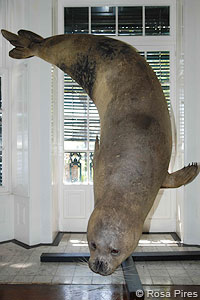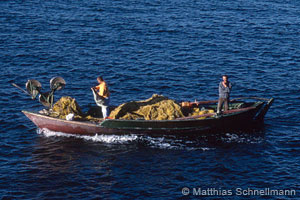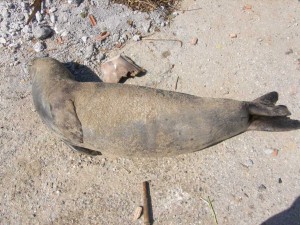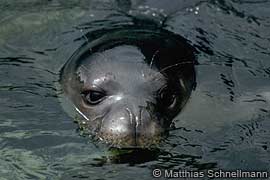— by Rosa Pires, Parque Natural da Madeira Service

Following her death in late 2008, Madeira’s most popular monk seal, “Desertinha”, will be put on public display as a taxidermic model. The work, by a Portuguese taxidermist and sponsored by Deutsche Bank, was first presented to the public on 17 June at the Museum of Natural History in the Botanical Gardens, Funchal.
‘Desertinha’ gained local fame in 2006 after sustaining a serious injury to the lower limbs, her plight creating a huge wave of sympathy from Madeirans. This resulted in the most prominent conservation campaign ever made in the region [see Seal finds stardom, TMG 9(2): 2006].
Desertinha was first identified in 1993 and was monitored by the staff of the Parque Natural da Madeira Service over 16 years. After being found ill in Madeira in 2008, she was transferred to the Rehabilitation Unit on the Desertas Islands, where she died due to cardiac arrest, on 1 December [see Our monk seal ambassador, ‘Desertinha’ dies in Madeira, TMG 12(1): 2009].
Following display at the Museum of Natural History, the Desertinha exhibit was presented at the Expo Madeira from 8 to 17 July. The work will be put on permanent display at the Whale Museum of Madeira, which will be inaugurated in September this year.

 The FAO’s General Fisheries Commission for the Mediterranean (
The FAO’s General Fisheries Commission for the Mediterranean (
 Hundreds of species are facing extinction across Europe in a ‘crisis of biodiversity’.
Hundreds of species are facing extinction across Europe in a ‘crisis of biodiversity’.